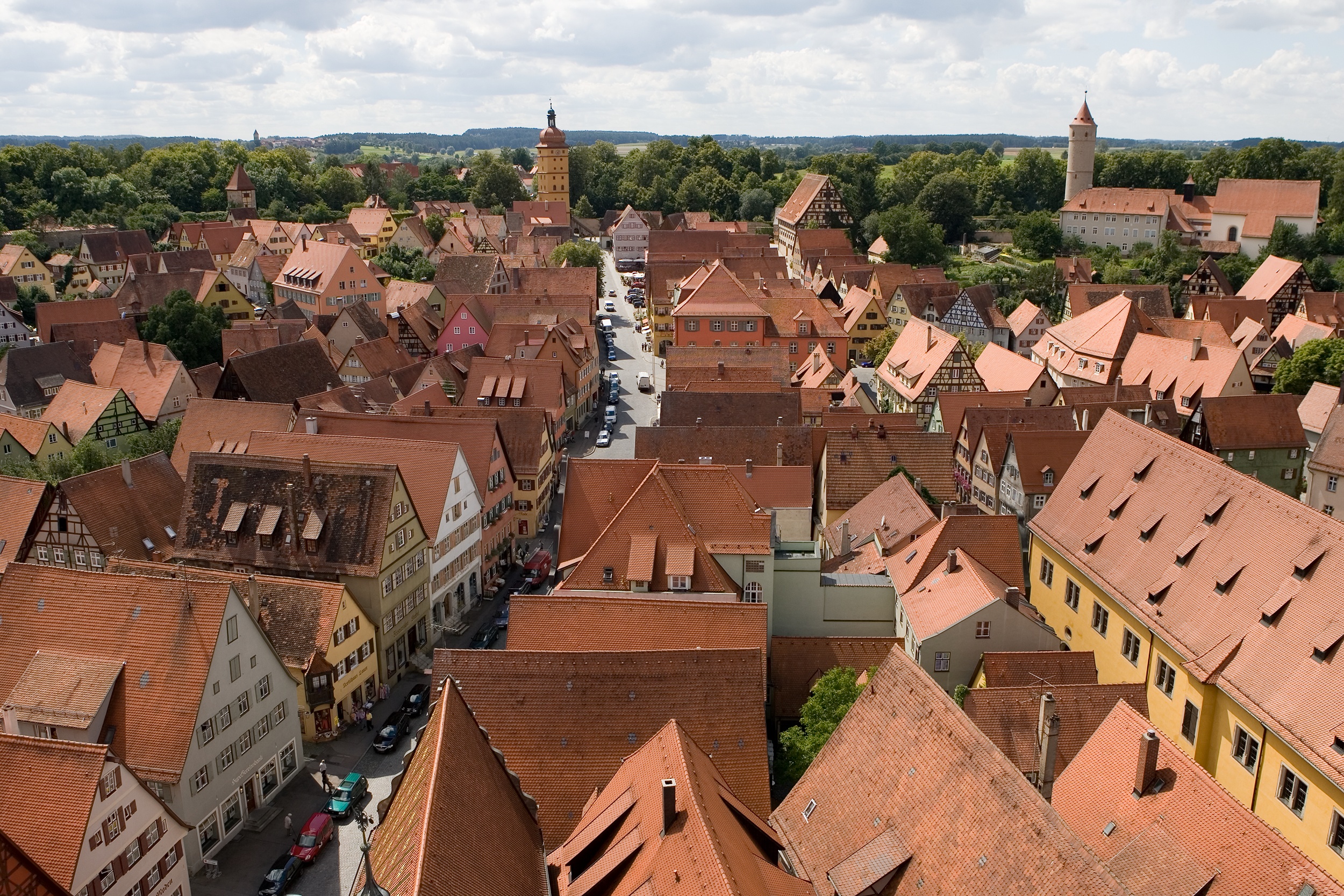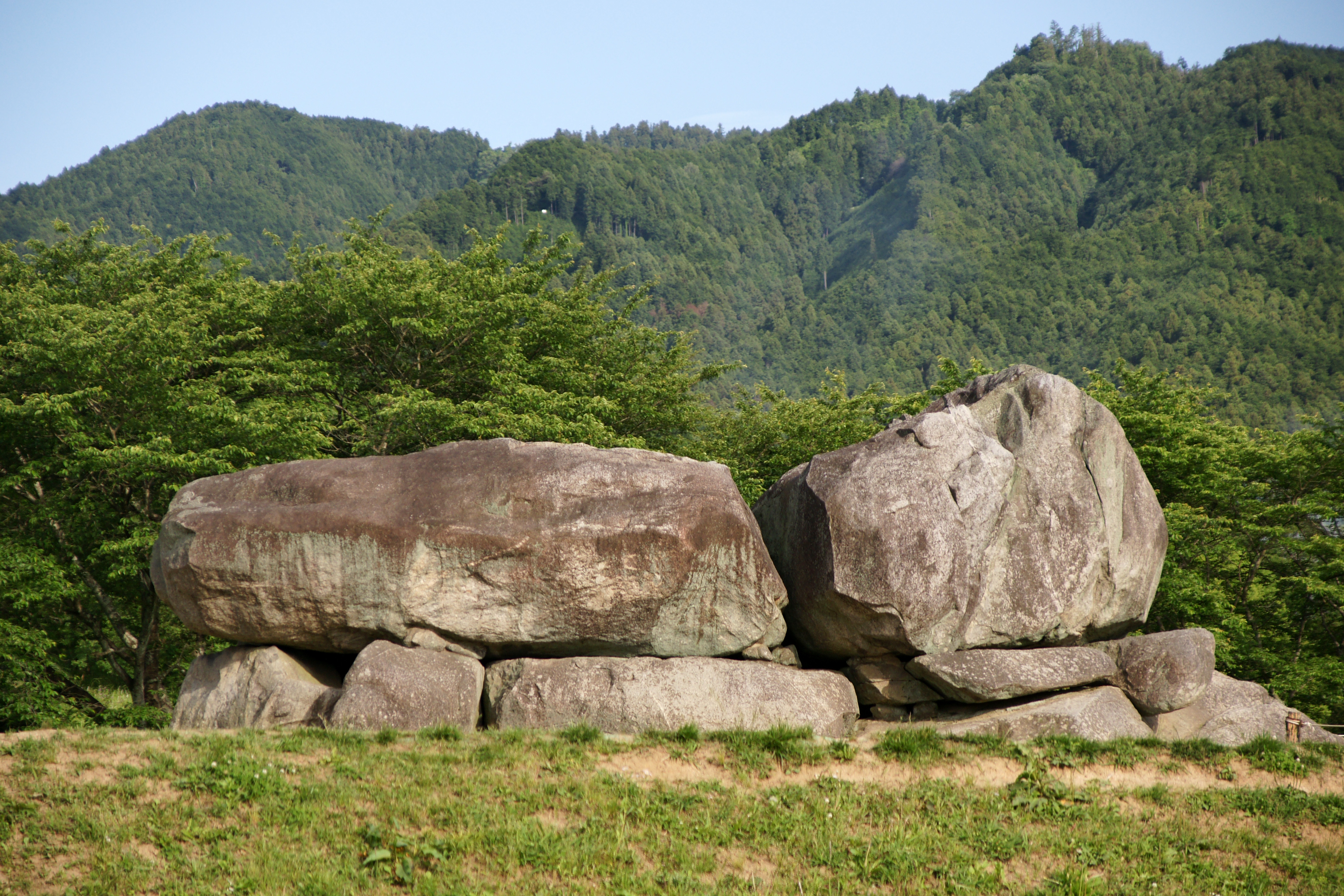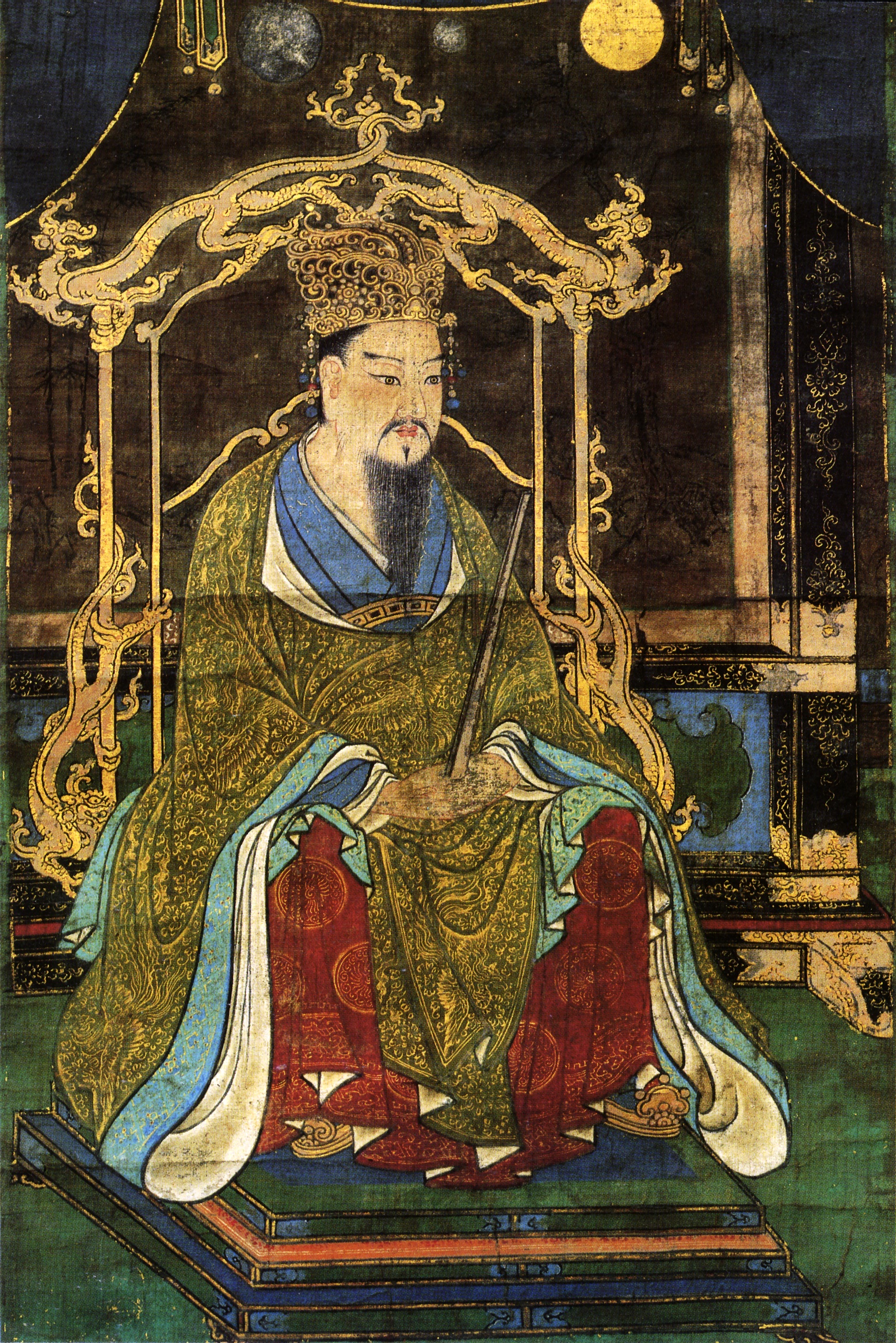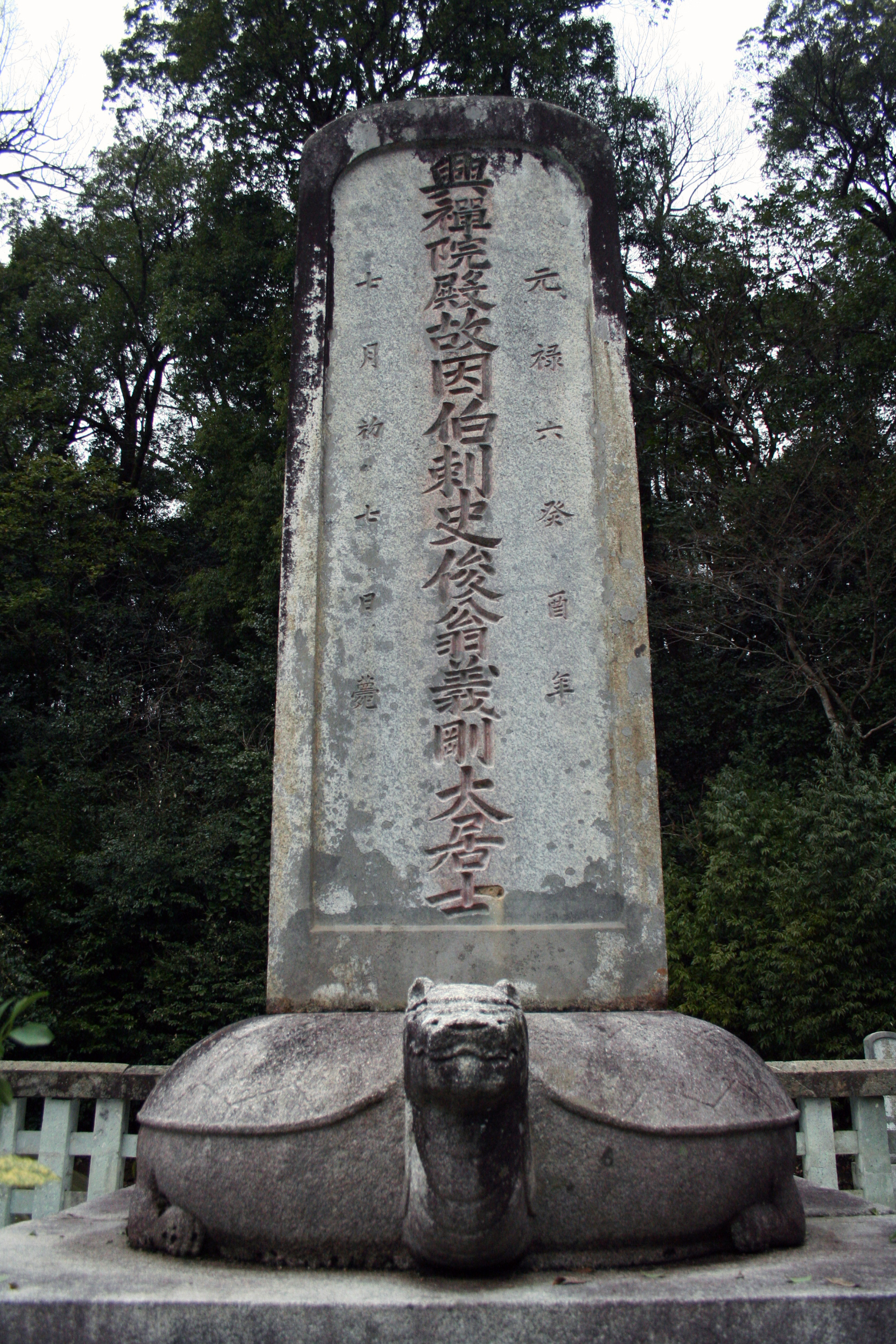|
Kazusa Kokubun-ji
is a Buddhist temple in Ichihara, Chiba, Japan, belonging to the Shingon-shu Buzan-ha sect, and is the provincial temple ("kokubunji") of former Kazusa Province. The present temple is of uncertain foundation, but claims to be the direct descendant of the original Nara period ''kokubunji'' temple which fell into ruins sometime in the Muromachi period. The Nara-period temple ruins were designated a National Historic Site in 1929, with the area under protection expanded in 1979 due to additional archaeological finds. Overview The ''Shoku Nihongi'' records that in 741 AD, as the country recovered from a major smallpox epidemic, Emperor Shōmu ordered that a monastery and nunnery be established in every province, the . The Kazusa Kokubun-ji was located on the northern bank of the Yōrō River, in an area with a high concentration of ''kofun'' and ancient sites. The ancient temple is mentioned in historical records to the Oei era (1394-1427), but appears to have fallen into ruin af ... [...More Info...] [...Related Items...] OR: [Wikipedia] [Google] [Baidu] |
Buddhist
Buddhism ( , ), also known as Buddha Dharma and Dharmavinaya (), is an Indian religion or philosophical tradition based on teachings attributed to the Buddha. It originated in northern India as a -movement in the 5th century BCE, and gradually spread throughout much of Asia via the Silk Road. It is the world's fourth-largest religion, with over 520 million followers (Buddhists) who comprise seven percent of the global population. The Buddha taught the Middle Way, a path of spiritual development that avoids both extreme asceticism and hedonism. It aims at liberation from clinging and craving to things which are impermanent (), incapable of satisfying ('), and without a lasting essence (), ending the cycle of death and rebirth (). A summary of this path is expressed in the Noble Eightfold Path, a training of the mind with observance of Buddhist ethics and meditation. Other widely observed practices include: monasticism; " taking refuge" in the Buddha, the , and th ... [...More Info...] [...Related Items...] OR: [Wikipedia] [Google] [Baidu] |
Yōrō River
The is a river in Chiba Prefecture, Japan. It is in length and has a drainage area of . Under the Rivers Act of 1906 the Yōrō is designated as a Class 2 River. The Yōrō originates near Mount Kiyosumi on the border of Amatsukominato area of Kamogawa, Chiba, Kamogawa and Ōtaki, Chiba, Ōtaki, and then passes through Ōtaki and Ichihara, Chiba, Ichihara. The Yōrō Ravine and Awamata Falls are located in the upper part of the Yōrō, and it meets the Koshikiya River, the Heizō River, and the Uchida River at its midpoint. Land around the middle and lower parts of the Yōrō have been developed for rice production. The river flows through significant parts of the Bōsō Hill Range before it empties into Tokyo Bay in the Goi and Iwazaki districts of Ichihara. Land reclamation at the mouth of the Yōrō is a component of the Keiyō Industrial Zone. The Kominato Line of the Kominato Railway roughly follows the path of the Yōrō and provides access to many of the tourist destination ... [...More Info...] [...Related Items...] OR: [Wikipedia] [Google] [Baidu] |
Japanese Pagoda
Multi-storied pagodas in wood and stone, and a ''gorintō'' Pagodas in Japan are called , sometimes or and historically derive from the Chinese pagoda, itself an interpretation of the Indian ''stupa''. Like the ''stupa'', pagodas were originally used as reliquaries but in many cases they ended up losing this function. Pagodas are quintessentially Buddhist and an important component of Japanese Buddhist temple compounds but, because until the Kami and Buddhas Separation Act of 1868, a Shinto shrine was normally also a Buddhist temple and vice versa, they are not rare at shrines either. The famous Itsukushima Shrine, for example, has one. After the Meiji Restoration the word ''tō'', once used exclusively in a religious context, came to mean also "tower" in the western sense, as for example in . Of the Japanese pagoda's many forms, some are built in wood and are collectively known as , but most are carved out of stone (. Wood pagodas are large buildings with either two stor ... [...More Info...] [...Related Items...] OR: [Wikipedia] [Google] [Baidu] |
Main Hall (Japanese Buddhism)
Main hall is the building within a Japanese Buddhist temple compound ('' garan'') which enshrines the main object of veneration.Kōjien Japanese dictionary Because the various denominations deliberately use different terms, this single English term translates several Japanese words, among them ''butsuden'', ''butsu-dō'', ''kondō'', ''konpon-chūdō'', and ''hondō''. ''Hondō'' is its exact Japanese equivalent, while the others are more specialized words used by particular sects or for edifices having a particular structure. Kondō (Asuka and Nara periods) The term started to be used during the Asuka and Nara periods. A ''kondō'' is the centerpiece of an ancient Buddhist temple's ''garan'' in Japan. The origin of the name is uncertain, but it may derive from the perceived preciousness of its content, or from the fact that the interior was lined with gold. This is the name used by the oldest temples in the country.Iwanami Nihonshi Jiten A ''kondō'', for example Hōryū-ji's ... [...More Info...] [...Related Items...] OR: [Wikipedia] [Google] [Baidu] |
Archaeological Excavation
In archaeology, excavation is the exposure, processing and recording of archaeological remains. An excavation site or "dig" is the area being studied. These locations range from one to several areas at a time during a project and can be conducted over a few weeks to several years. Excavation involves the recovery of several types of data from a site. This data includes artifacts (portable objects made or modified by humans), features (non-portable modifications to the site itself such as post molds, burials, and hearths), ecofacts (evidence of human activity through organic remains such as animal bones, pollen, or charcoal), and archaeological context (relationships among the other types of data).Kelly&Thomas (2011). ''Archaeology: down to earth'' (4th ed.). Belmont, Calif.: Wadsworth, Cengage Learning. Before excavating, the presence or absence of archaeological remains can often be suggested by, non-intrusive remote sensing, such as ground-penetrating radar. Basic informat ... [...More Info...] [...Related Items...] OR: [Wikipedia] [Google] [Baidu] |
Roof Tiles
Roof tiles are designed mainly to keep out rain, and are traditionally made from locally available materials such as terracotta or slate. Modern materials such as concrete, metal and plastic are also used and some clay tiles have a waterproof glaze. Roof tiles are 'hung' from the framework of a roof by fixing them with nails. The tiles are usually hung in parallel rows, with each row overlapping the row below it to exclude rainwater and to cover the nails that hold the row below. There are also roof tiles for special positions, particularly where the planes of the several pitches meet. They include ridge, hip and valley tiles. These can either be bedded and pointed in cement mortar or mechanically fixed. Similarly to roof tiling, tiling has been used to provide a protective weather envelope to the sides of timber frame buildings. These are hung on laths nailed to wall timbers, with tiles specially molded to cover corners and jambs. Often these tiles are shaped at the exposed e ... [...More Info...] [...Related Items...] OR: [Wikipedia] [Google] [Baidu] |
Asuka, Nara
is a village located in Takaichi District, Nara Prefecture, Japan. As of April 1, 2017, the village has an estimated population of 5,681, with 2,170 households, and a population density of . The total area is . Asuka is the land where ancient palaces were located. There are strict rules governing construction in this historic town. Asuka can be reached from Okadera or Asuka Station on Kintetsu Yoshino Line train line. Although it's outside Asuka, Kashiharajingū-mae Station in neighboring Kashihara has service on the Kintetsu Kashihara Line, Minami Osaka Line and Yoshino Lines. By car, Asuka is on Route 169. History ''For the ancient Asuka, see Asuka period and Asuka, Yamato.'' In 1956, the village of Asuka (明日香) was founded as a result of a merger of three villages, Sakaai, Takechi and Asuka (飛鳥村). In 1966, Asuka was proclaimed a "historic town", as defined by the national Special Arrangement for Preservation of Historic Sites Laas well as Kyoto, Nara and ... [...More Info...] [...Related Items...] OR: [Wikipedia] [Google] [Baidu] |
Daian-ji
was founded during the Asuka period and is one of the Seven Great Temples of Nara, Japan. History The Nihon Shoki records the founding of the , predecessor of the Daian-ji, in 639 during the reign of Emperor Jomei. A nine-story pagoda was added shortly afterwards. Moved during the reign of Emperor Tenmu, excavations have uncovered the foundations of the site of the , as it was then known, seven hundred metres to the south of Mount Kagu. Like the Yakushi-ji, and Gangō-ji, the temple relocated to the new capital of Heijō-kyō in 716–17, and it was rebuilt as the Daian-ji in 729. Its importance declined when the capital moved again to Kyoto at the end of the Nara period. A succession of fires, a typhoon in 1459 and earthquakes in 1585 and 1596 destroyed most of the temple. The stone bases of the former twin pagodas were removed for reuse at Kashihara Jingū in 1889, while the ruins of the other buildings lie in adjacent properties. Treasures The temple houses nine statue ... [...More Info...] [...Related Items...] OR: [Wikipedia] [Google] [Baidu] |
Taira No Masakado
was a Heian period provincial magnate (''gōzoku'') and samurai based in eastern Japan, notable for leading the first recorded uprising against the central government in Kyōto. Early life Masakado was one of the sons of Taira no Yoshimasa (平良将), also known as Taira no Yoshimochi (平良持), of the Kanmu Taira clan (''Kanmu Heishi''), descendants of Emperor Kanmu (reigned 781-806) who were demoted from princely to commoner status and granted the Taira surname. Yoshimochi was one of the sons of Prince Takamochi, a grandson or great-grandson of Kanmu who was appointed the vice-governor of Kazusa Province (modern central Chiba Prefecture) in 889 ( Kanpyō 1). Takamochi's sons who joined him there occupied a variety of provincial offices in the eastern part of the country such as that of '' chinjufu shōgun'', the commander-in-chief of the defense garrison (''chinjufu'') in Mutsu Province tasked with subjugating the Emishi peoples of the north. Not much is known of Mas ... [...More Info...] [...Related Items...] OR: [Wikipedia] [Google] [Baidu] |
Nanboku-chō Period
The Nanboku-chō period (南北朝時代, ''Nanboku-chō jidai'', "North and South court period", also known as the Northern and Southern Courts period), spanning from 1336 to 1392, was a period that occurred during the formative years of the Muromachi (Ashikaga) shogunate of Japanese history.During the early period, there existed a Northern Imperial Court, established by Ashikaga Takauji in Kyoto, and a Southern Imperial Court, established by Emperor Go-Daigo in Yoshino. Ideologically, the two courts fought for 50 years, with the South giving up to the North in 1392. However, in reality the Northern court was under the power of the Ashikaga shogunate and had little real independence. The destruction of the Kamakura shogunate of 1333 and the failure of the Kenmu Restoration in 1336 opened up a legitimacy crisis for the new shogunate. Institutional changes in the estate system ('' shōen'') that formed the bedrock of the income of nobles and warriors altered the status of the var ... [...More Info...] [...Related Items...] OR: [Wikipedia] [Google] [Baidu] |
Niōmon
is the Japanese name of a Buddhist temple A Buddhist temple or Buddhist monastery is the place of worship for Buddhists, the followers of Buddhism. They include the structures called vihara, chaitya, stupa, wat and pagoda in different regions and languages. Temples in Buddhism represen ... gate guarded by two wooden warriors called Niō (lit. Two Kings). The gate is called Heng Ha Er Jiang (哼哈二将) in China and Geumgangmun (금강문) in Korea. The two statues are inside the two posts of the gate itself, one at the left, one at the right. Structurally, it usually is either a ''rōmon'' or a ''nijūmon'' and can measure either 5x2 or 3x2 ''Ken (architecture), bays''. It can sometimes have just one story, as in the case of Asakusa's Kaminarimon. In a five-bay gate, the figures of the two Niō are usually enshrined in the two outer bays, but can be sometimes found also in the inner ones. The statue on the right is called and has his mouth open to utter the first letter ... [...More Info...] [...Related Items...] OR: [Wikipedia] [Google] [Baidu] |
Genroku
was a after Jōkyō and before Hōei. The Genroku period spanned the years from the ninth month of 1688 to the third month of 1704. The reigning emperor was .Titsingh, Isaac. (1834). ''Annales des empereurs du japon'', p. 415. The period was known for its peace and prosperity, as the previous hundred years of peace and seclusion in Japan had created relative economic stability. The arts and architecture flourished. There were unanticipated consequences when the shogunate debased the quality of coins as a strategy for financing the appearance of continuing Genroku affluence. This strategic miscalculation caused abrupt inflation. Then, in an effort to solve the ensuing crisis, the introduced what were called the Kyōhō Reforms. Change of era The was 1688. The new era name was created to mark the beginning of the reign of Higashiyama. The previous era ended and the new one commenced in Jōkyō 5, on the 30th day of the 9th month. A sense of optimism is suggested in the era ... [...More Info...] [...Related Items...] OR: [Wikipedia] [Google] [Baidu] |









